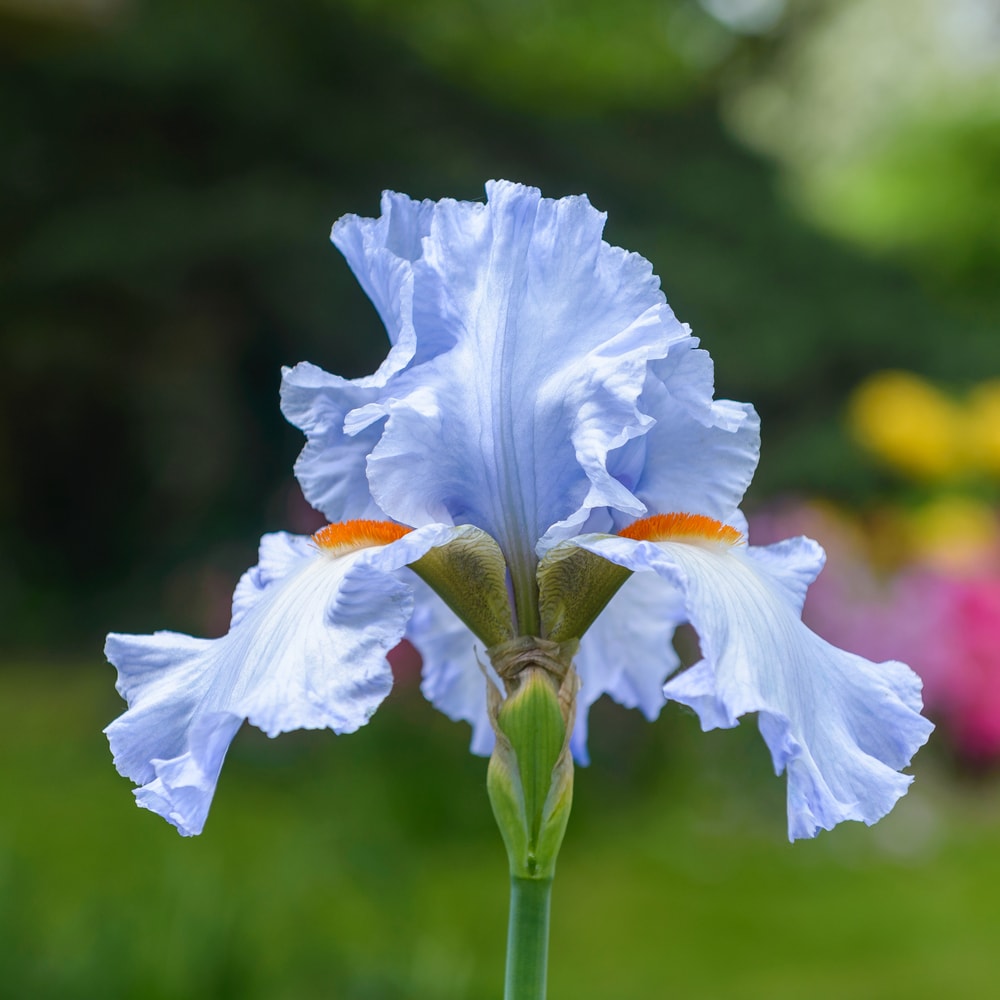I know fall is on the horizon when the bearded iris rhizomes arrive in the store. We just got ours in so fall can’t be far behind (exactly one month from this coming Thursday, to be exact.)
History
Irises are a genus of over 250 flowering plants. The word “iris” is from the Greek word for rainbow—appropriate since iris come in a wide range of colors—from crystalline white to purple-black. Iris are perennials and grow from either rhizome or from bulbs. Nearly all iris are native to the Northern Hemisphere from Europe to Asia.
The Egyptians believed that the three upright petals of the iris stood for faith, wisdom, and valor. The French King Clovis the first was said to have used the iris as his inspiration for the fleur-de-lis in the early 500s. In the United States, iris date back to the 1600’s, brought over to Virginia by European settlers.
Iris flowers have six petals—three upright petals called ‘standards’ and three lower petals called “falls.” Bearded iris is so called because of the fluffy orange or gold “beard” down the middle of each fall.
Bearded iris—sometimes called German Bearded Iris—are sturdy and easy-to-grow plants needing only a sunny spot and well-drained soil. The rhizomes are usually available in late summer/early fall. Bearded iris have bigger showier flowers than other iris. Depending on the variety, they will bloom anytime from mid-May to mid-late June.
We have just gotten in a great selection of rhizomes.
Planting and Care
To plant them, choose a sunny spot with well-drained soil. The rhizomes come with roots and a fan of leaves at the top. Plant the stem with the root side down, but the top of the stem exposed to light and air. Top dress lightly with Bulb-tone. Feed iris again in the spring, when they start to come up.
For regular iris, you can just forget about them after they bloom, except in periods of drought. Keep all iris beds weeded since they don’t like to compete. If you mulch, do not mulch over the top of the rhizomes and be sure to not let leaves accumulate in the iris bed as they can encourage rot, as well as giving iris borers a place to hide.
There are Bearded Iris that are rebloomers that will bloom in the spring and, if conditions are to their liking, again in late summer/early fall. If you have reblooming iris, then feed them lightly after they bloom the first time and keep them watered over the summer—remembering to dry out partially.
It’s easy to have a rainbow of spring color in your yard with bearded iris—and, as a bonus—deer don’t like them.

